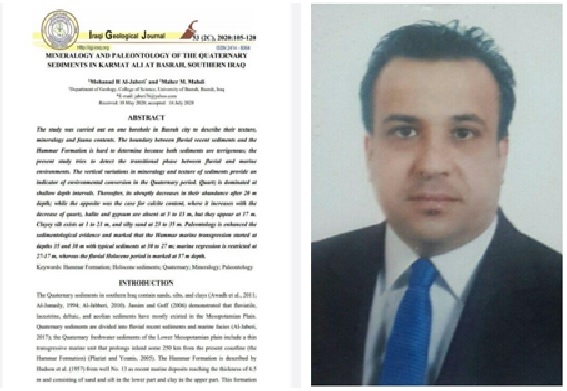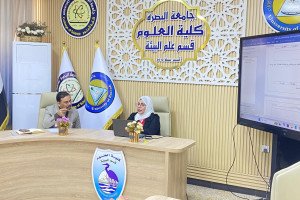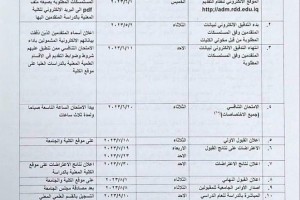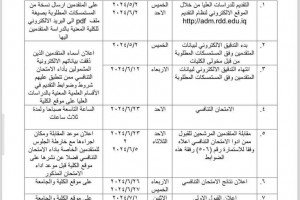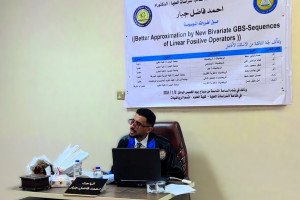
A paper titled “Mineralogy and Paleontology of the Quaternary Sediments in Karmat Ali at Basrah, Southern Iraq” was published by Dr. Mohanad Hamid Al-Jaberi and Maher Mandeel Mahdi in the Iraqi Geological Journal, which is a Scopus journal with an impact factor of 0.3.
The study was carried out on one borehole in Basrah city to describe their texture, mineralogy and fauna contents. The boundary between fluvial recent sediments and the Hammar Formation is hard to determine because both sediments are terrigenous. The study tries to detect the transitional phase between fluvial and marine environments. The vertical variations in mineralogy and texture of sediments provide an indicator of environmental conversion in the Quaternary period. Quartz is dominated at shallow depth intervals. Thereafter, it’s abruptly decreases in their abundance after 20m depth; while the opposite was the case for calcite content, where it increases with the decrease of quartz. Halite and gypsum are absent at 3 to 13m, but they appear at 17m. Clayey silt exists at 1 to 21m, and silty sand at 23 to 35m. Paleontology is enhanced the sedimentological evidence and marked that the Hammar marine transgression started at depths 35 and 30m with typical sediments at 30 to 27m; marine regression is restricted at 27-17m, whereas the fluvial Holocene period is marked at 17m depth.
